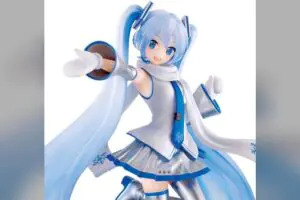Everyones favorite true to life space exploration game, Kerbal Space Program isn’t quite done, despite their announcements of Kerbal Space Program 2 being in the works. Yesterday, the Kerbal Space Program (colloquially known as KSP) developers, Squad, released the teased 1.8 ‘Moar Boosters’ patch, bringing even more content to a game that already includes the literal galaxy.
KSP is perhaps best known in the social media stratosphere as inspiring students to become astronauts and receiving attention from notables such as Elon Musk, NASA, and even the International Space Station. Along with its realistic simulations of thrust, orbiting mechanics, and the constant yet inevitable stranding of Kerbonauts on various heavenly bodies, and it’s no wonder that this initially sleeper early access has turned into an internationally acclaimed indie gem.
The Kerbal Space Program 1.8 patch ‘Moar Boosters’ holds a large amount of new content for aspiring Kerbonauts; most notably, perhaps, is the titular inclusion of new solid rocket boosters (SBR’s), from a 144 ton Clydesdale that will allow you to defy the laws of gravity even further, to a .625 SDR ‘Mite’. Rounding out the new part list is exclusive to the DLC ‘Breaking Ground Expansion, including new fan blades and shrouds to allow further development of cooling systems, drones, and piecemeal rockets. The additional content cements a Kerbal Space Program mantra lovingly thrown around between Kerbonauts: ‘In Thrust We Trust’.
Some engines also thankfully offer gimbal control, although only of one degree for the largest sized, while real SRB’s can offer up to five degrees of nozzle gimbal. Not many complaints have been voiced in this regard, as a singular degree of a gimbal is far greater than no gimbal at all. Additionally, thrust vectoring is present in the newest added SRB’s, allowing users to reach elliptical orbit with a singular engine, which while being a tad overpowered does offer a greater degree of engineering freedom for aspiring Kerbonauts.
Yet more than fresh pieces await fledgling Kerbonauts, as the Unity engine that drives our rockets starward has been updated, allowing Squad to address frame stuttering, increase graphic fidelity of various heavenly bodies, and offer better overall visual fidelity from the engineering bay to low orbit.
Many planets are boasting a new, crisp look, including Mun, Minmus, Duna, Gilly, Eve, and Ike. Featuring desolate sands, polar caps, craters, and ravines, these updates promise to make your eventual landing more attractive, and likely more difficult. Squad has announced that they fully intend to introduce this planet rework to the remaining celestial bodies in the coming months, and ask for patience as it requires a good bit of work. Also worth noting that the developers have stated that taking advantage of the newest patch to the fullest may require a pretty beefy computer set-up, as the various shaders can become demanding while shading an entire planet.
Some users have announced via Steam and Reddit that the new patch has bugged issues that may crop up during play, notably planets shaking during landing, while simultaneously reporting better engine performance on lower-end systems with system-appropriate graphic settings.
The patch released October 16th and is available now for PC users. Squad reports that they are currently working on similar enhancements and parts for consoles.



